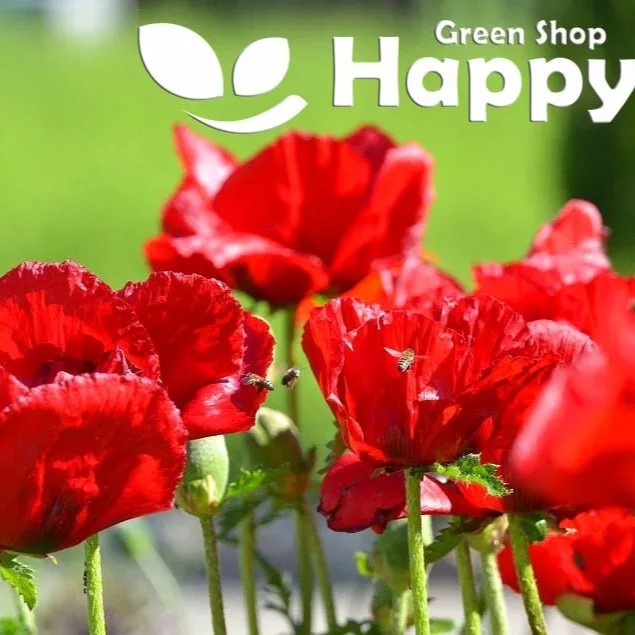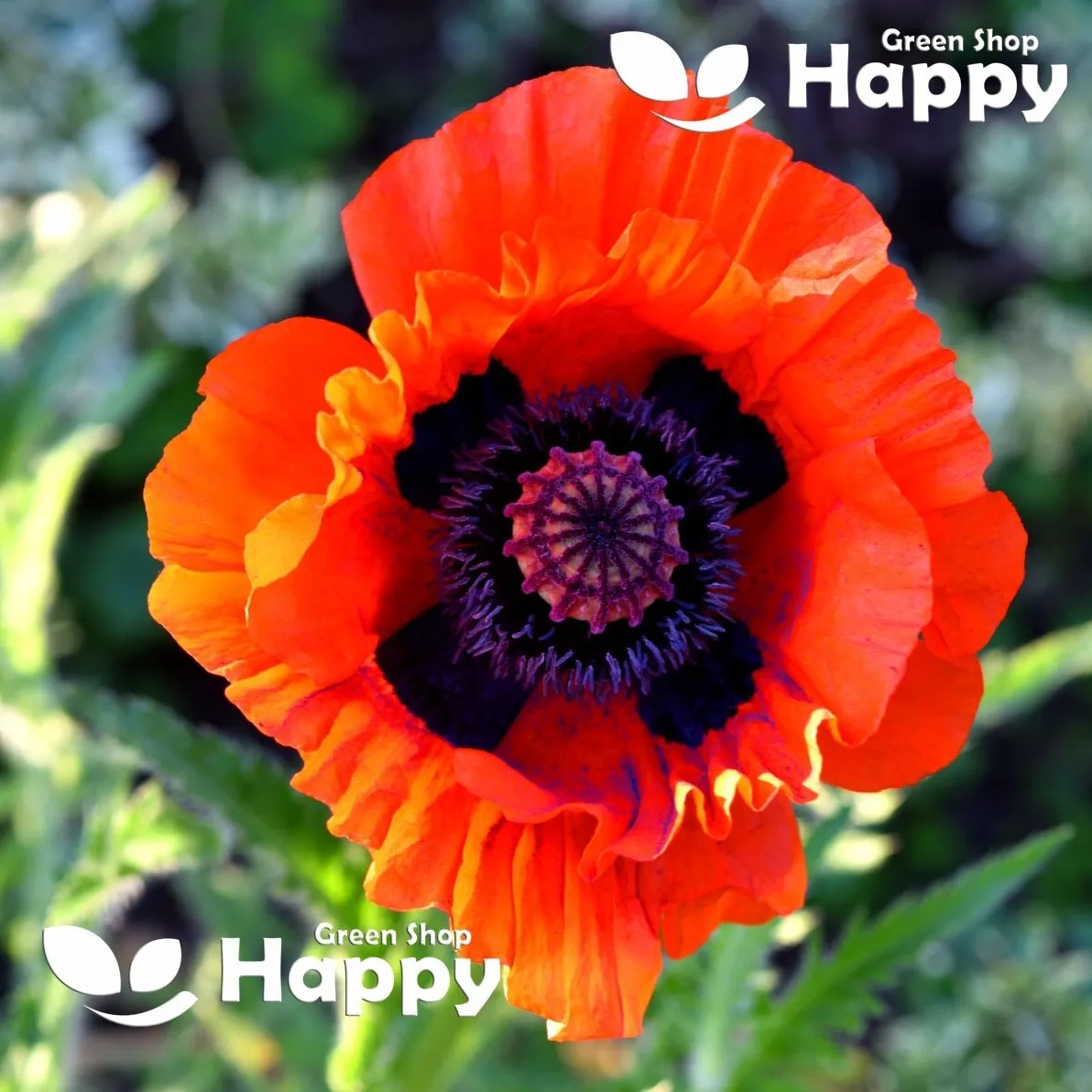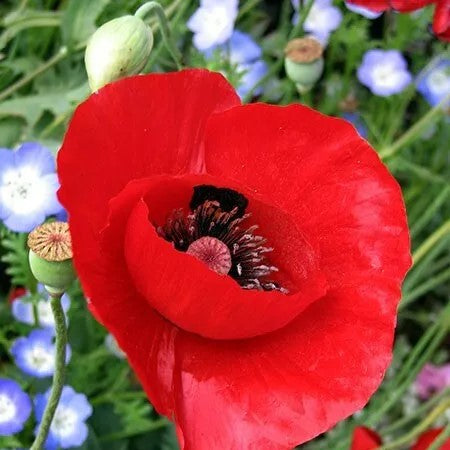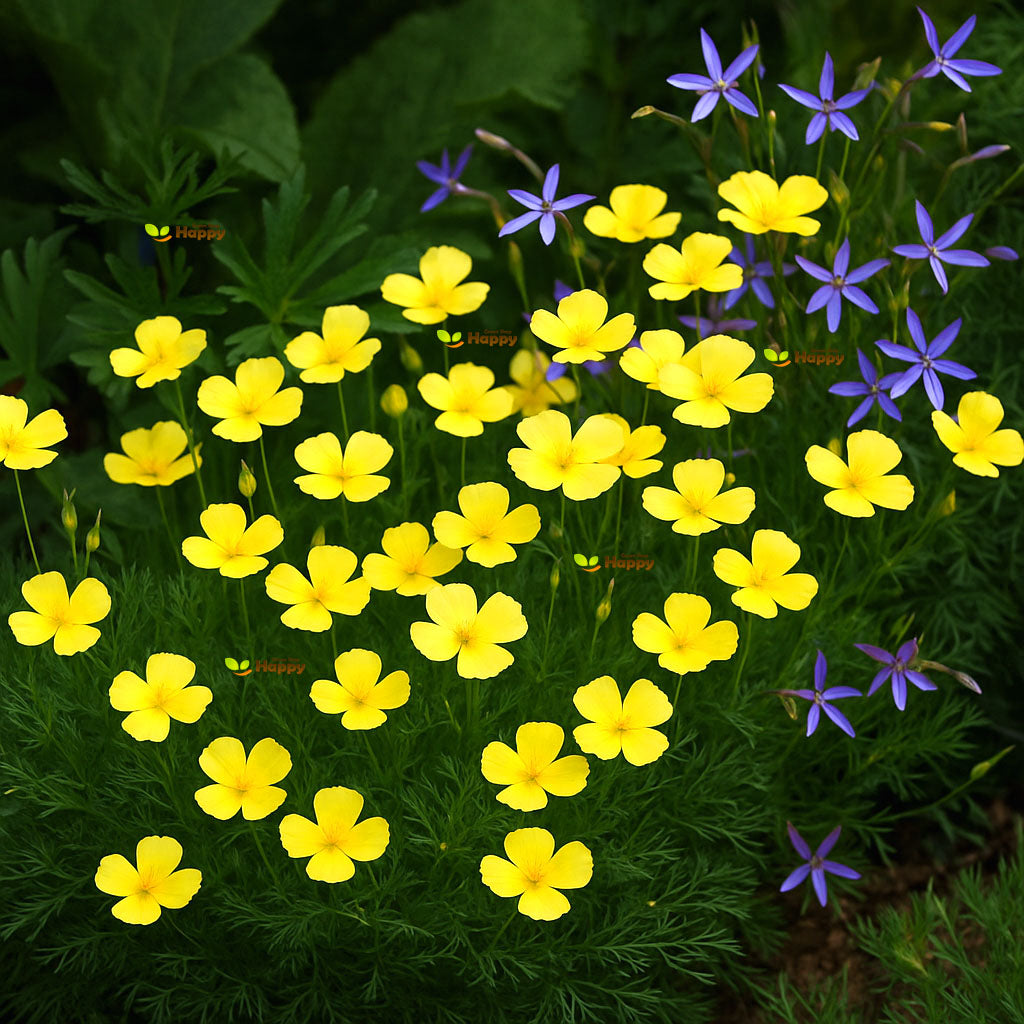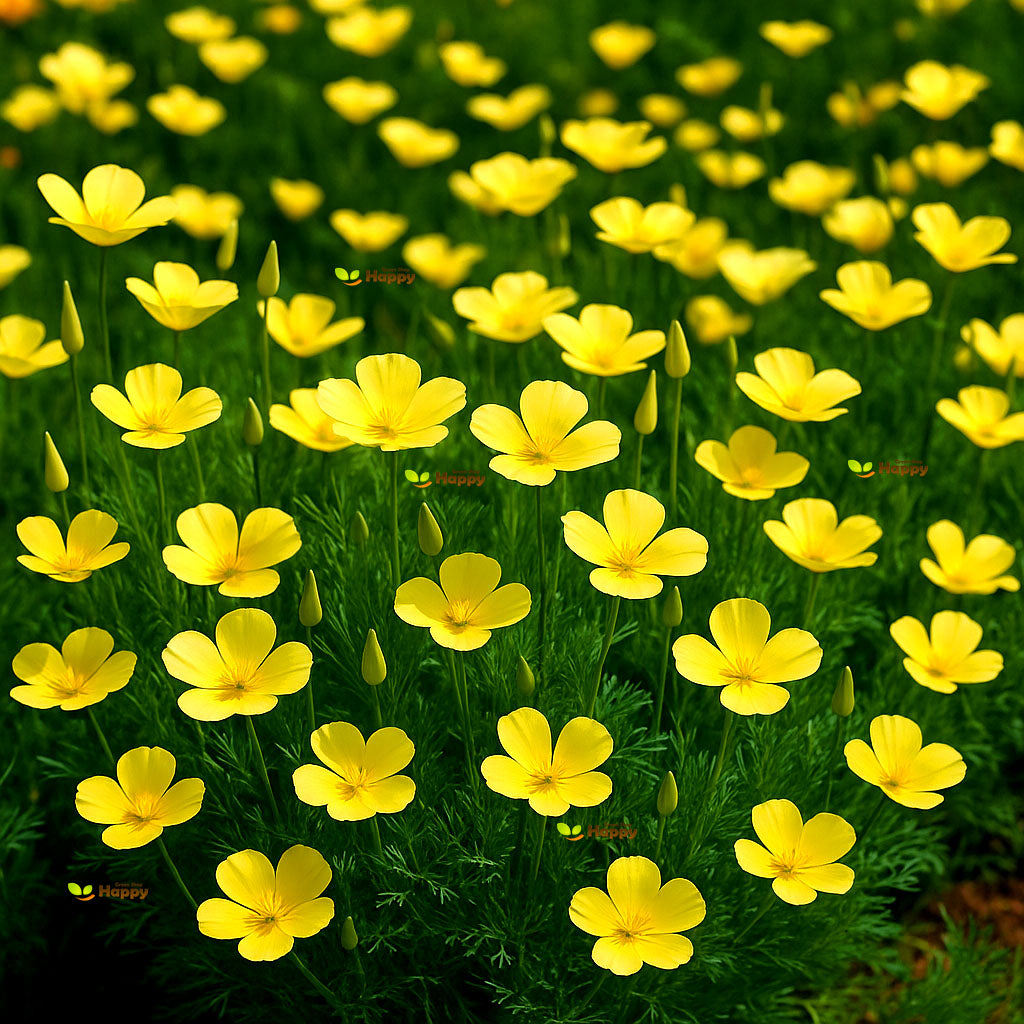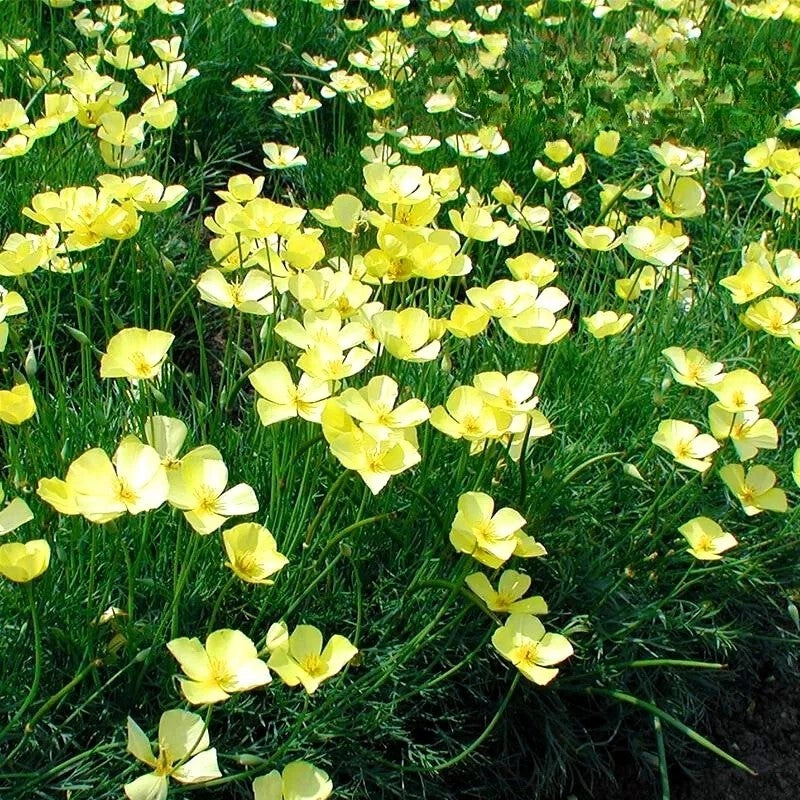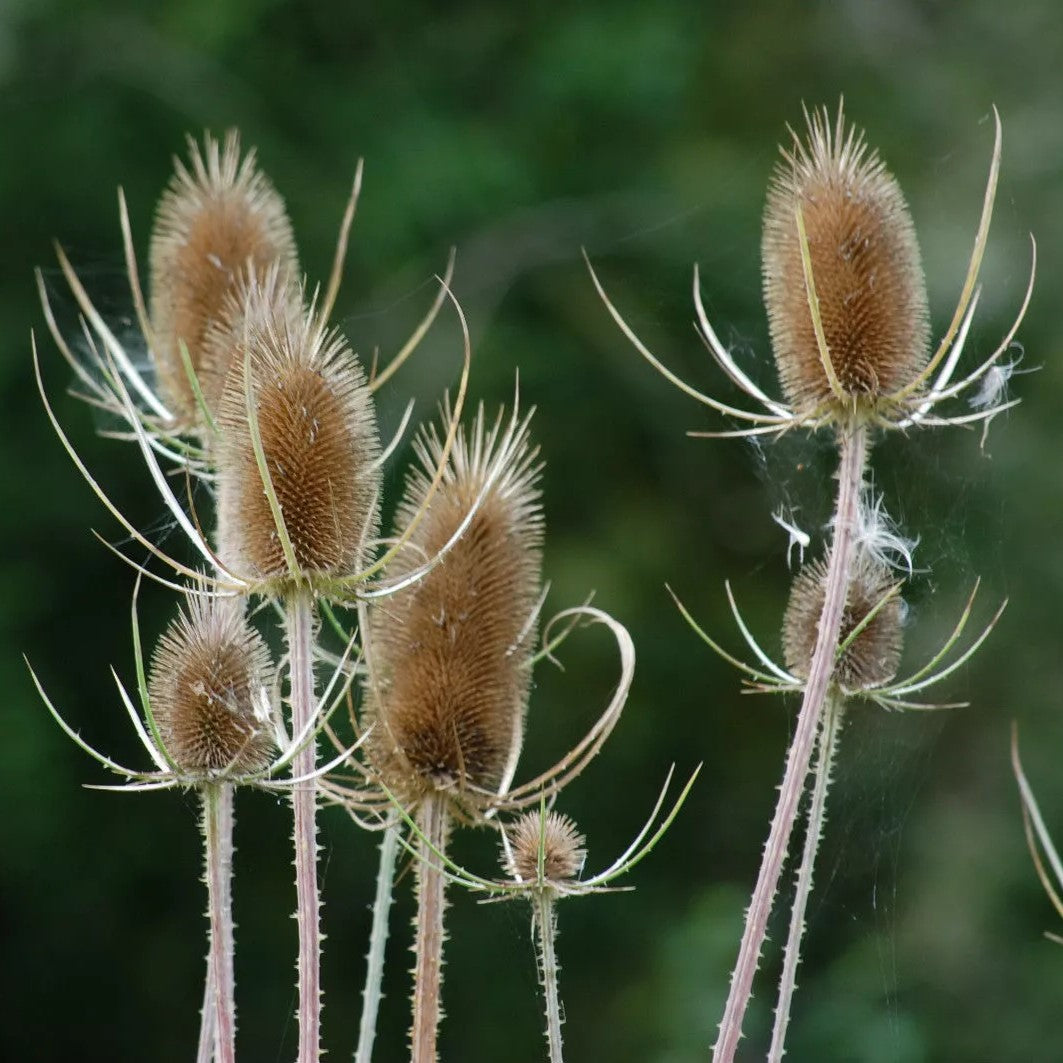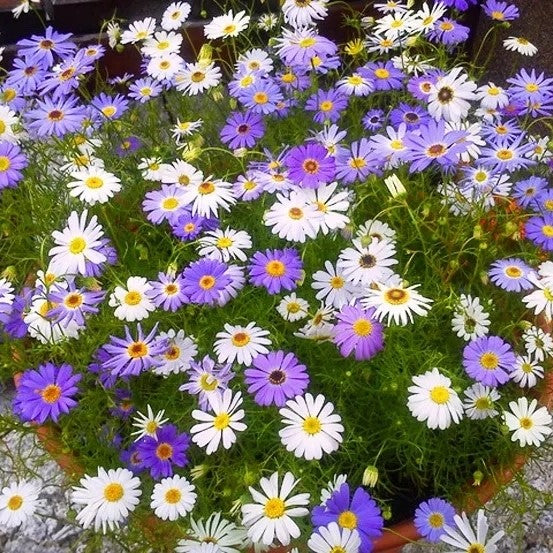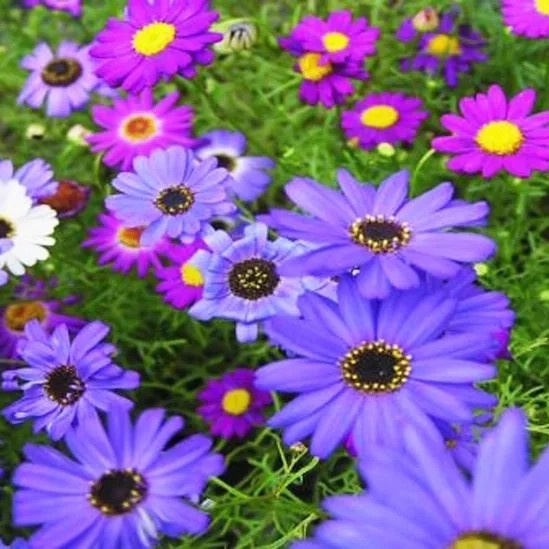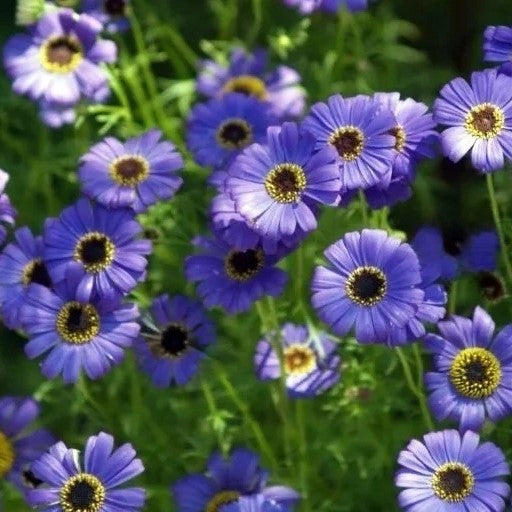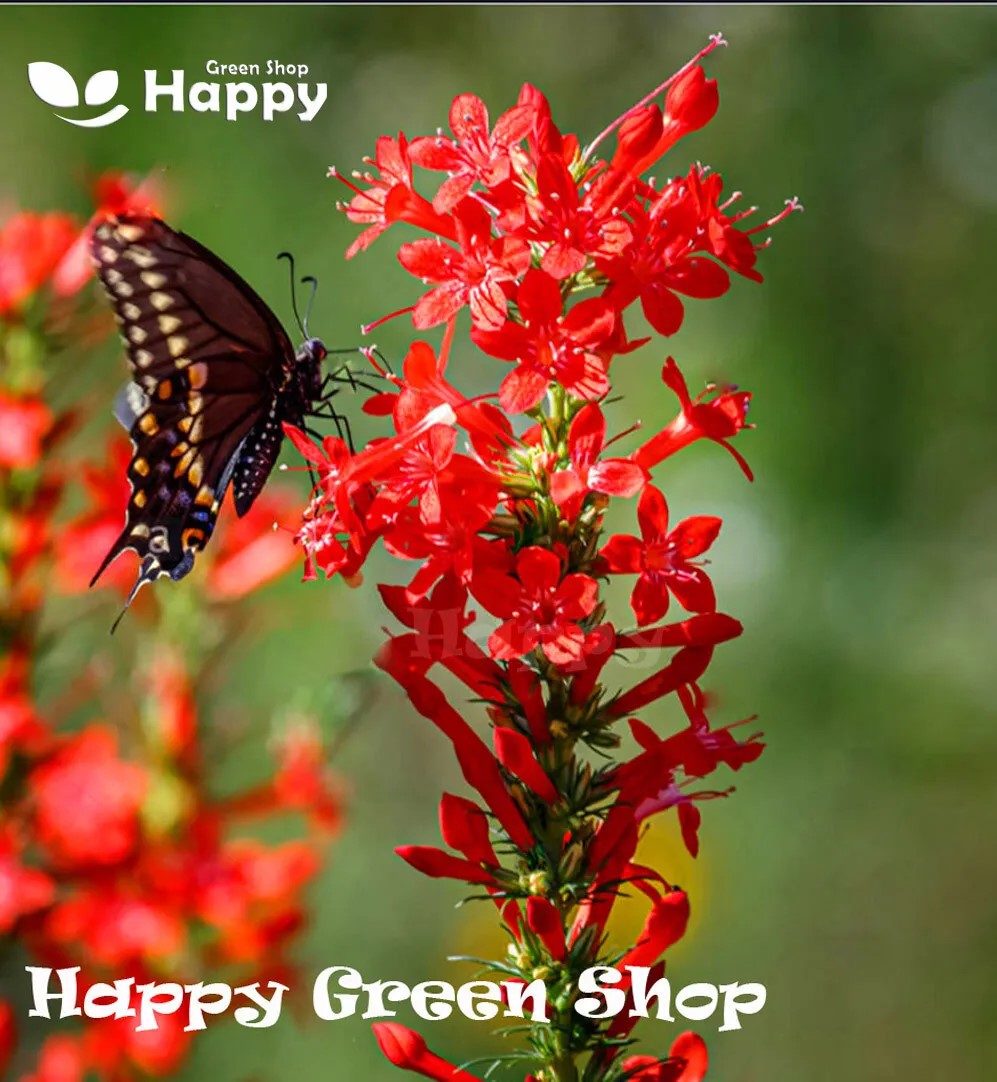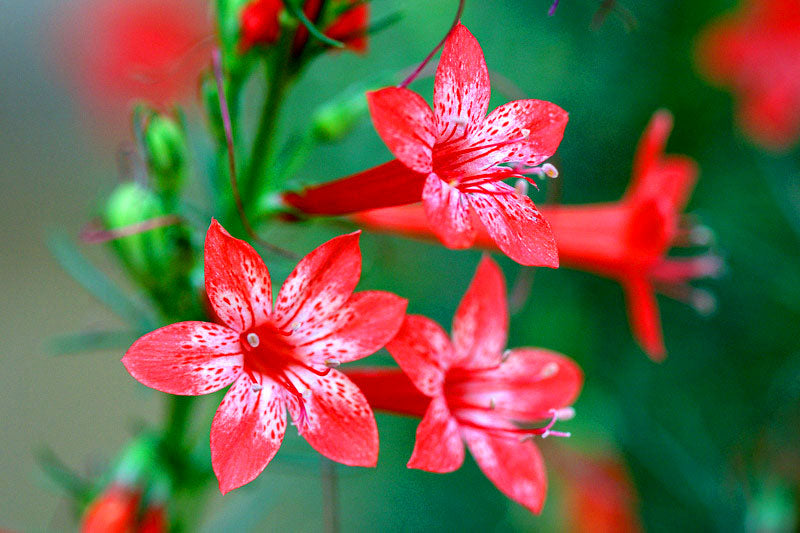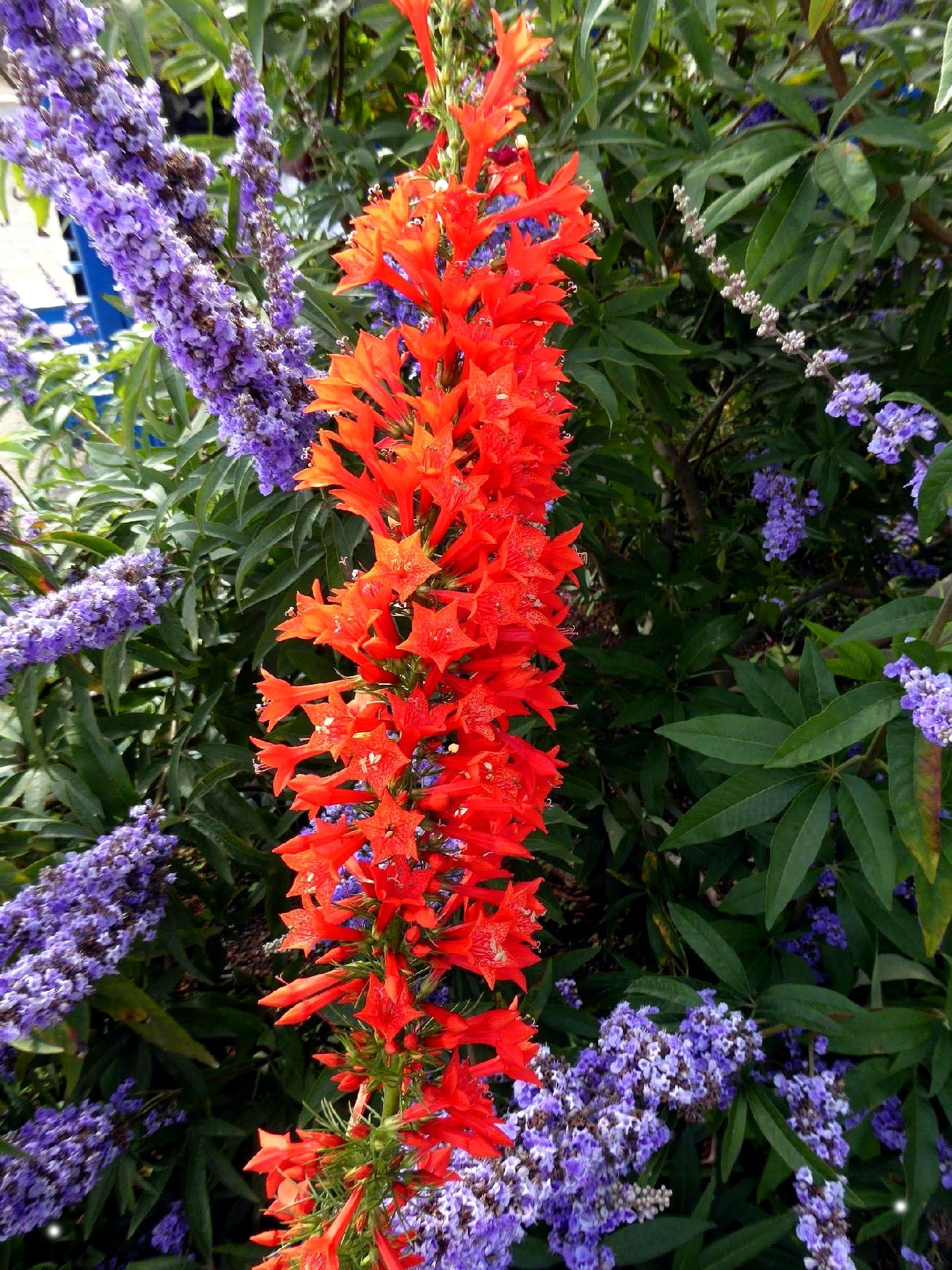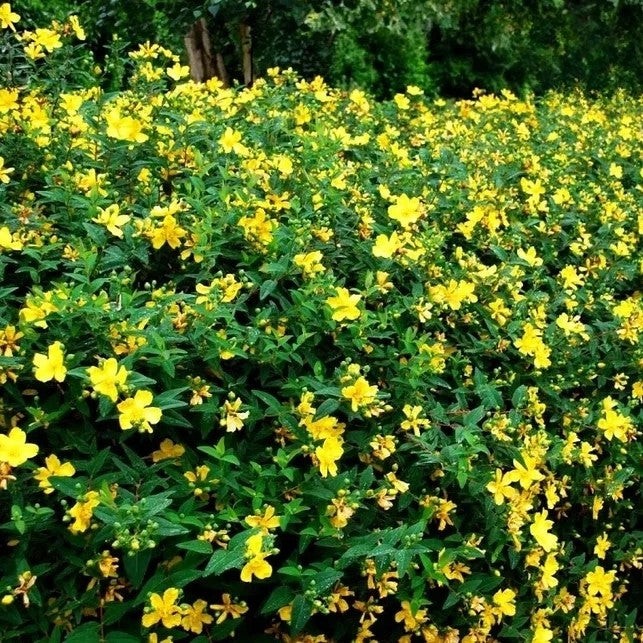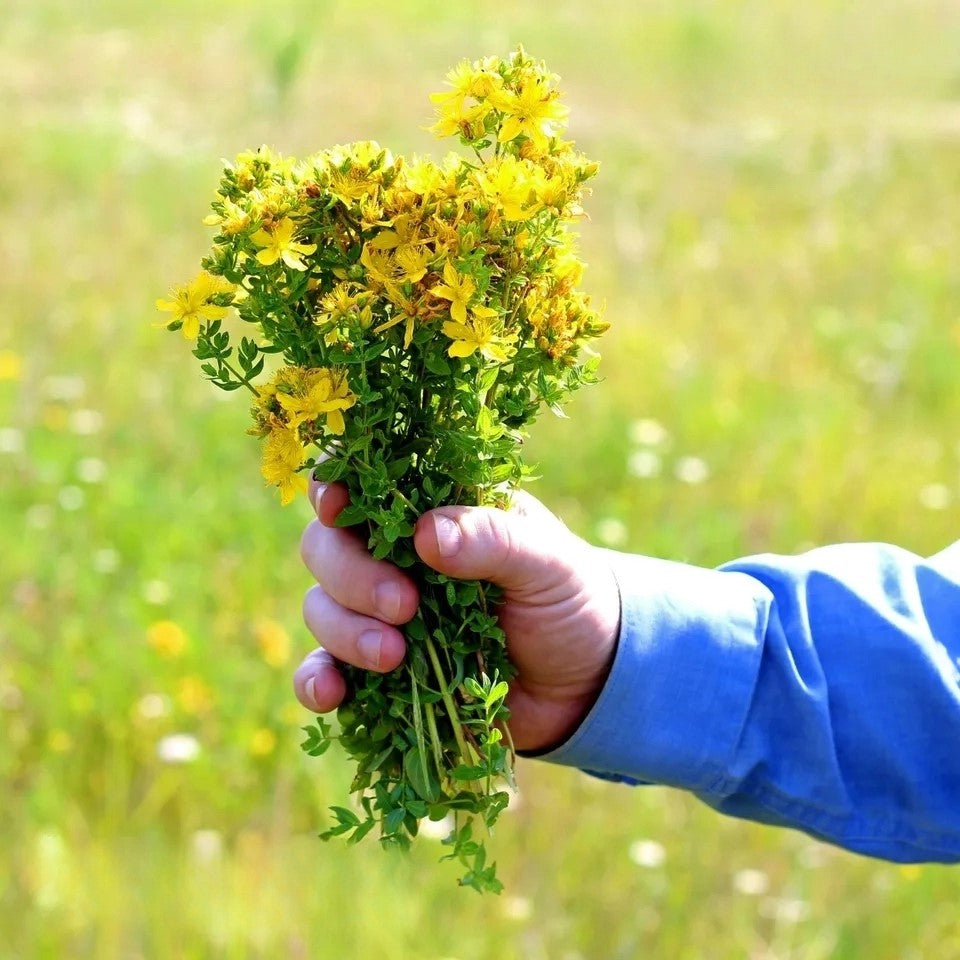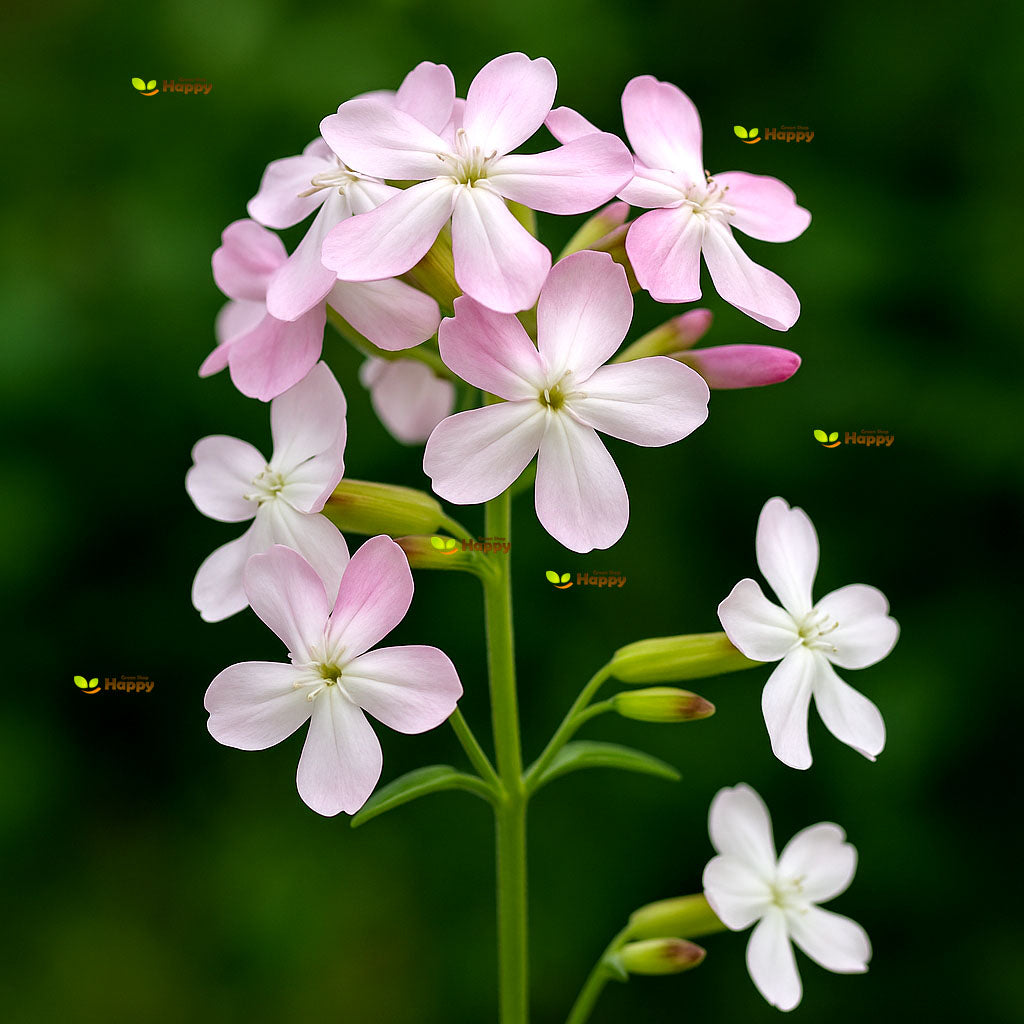Sort by:
108 products
108 products
Tulip Poppy Seeds (Papaver glaucum)
The Tulip Poppy (Papaver glaucum) is a striking annual with vibrant, cup-shaped flowers reminiscent of tulips. Available in shades of red, pink, and cream, these cheerful blooms bring a bold splash of color to borders, cottage gardens, and wildflower mixes. Ideal for naturalizing, cut flowers, or adding a classic poppy charm to your garden.
Why Grow Tulip Poppy
-
Unique tulip-shaped poppy blooms in vivid colors
-
Easy-to-grow, hardy annual
-
Great for borders, meadows, and cut flowers
Key Features
-
Botanical name: Papaver glaucum
-
Type: Hardy annual
-
Height: 40–60 cm
-
Spread: 20–30 cm
-
Flowering: Late spring–summer
-
Position: Full sun
-
Uses: Borders, cottage gardens, wildflower meadows, cut flowers
Sowing & Growing
-
Sow outdoors: March–May or September–October
-
Germination: 14–21 days at 15–20°C
-
Thin seedlings to 20–25 cm apart
-
Prefers full sun and well-drained soil
-
Deadhead for prolonged flowering or leave to self-seed
Tufted Poppy ‘Sundew’ Yellow – Golden Mini Blooms
Tufted Poppy ‘Sundew’ produces cheerful, bright yellow flowers on compact, tufted plants. Perfect for creating sunny borders, rock gardens, or naturalized areas, these hardy annuals add long-lasting color with minimal care.
What Makes It Special
-
Bright, sunny yellow blooms
-
Compact, tufted growth habit
-
Long-flowering and low-maintenance
-
Ideal for naturalized and rock gardens
Key Features
-
Annual plant
-
Grows 15–25 cm tall
-
Blooms from late spring to summer
-
Thrives in full sun and well-drained soil
-
Drought-tolerant and hardy
Ideal For
-
Garden borders and edges
-
Rock gardens and pathways
-
Wildflower and naturalized areas
-
Containers and sunny patios
Sowing
-
Sow directly outdoors after last frost
-
Plant seeds 0.3–0.5 cm deep
-
Germination: 7–14 days at 18–22°C
-
Space 15–20 cm apart
-
Water moderately and provide full sun
Temptress Flower Mixed Seeds (Verbascum phoeniceum)
A striking and colorful perennial, Temptress Flower Mixed produces tall spikes of vibrant blooms in shades of pink, purple, and white. Hardy and long-flowering, these plants attract pollinators and add architectural interest to borders, cottage gardens, and wildflower areas.
What Makes It Special
-
Eye-catching spikes of pink, purple, and white flowers
-
Hardy, long-lasting perennial with strong garden presence
-
Attracts bees and butterflies, supporting pollinator gardens
Key Features
-
Botanical name: Verbascum phoeniceum
-
Hardy perennial
-
Height: 60–120 cm (2–4 ft)
-
Bloom time: Mid-summer
Ideal For
-
Garden borders and cottage-style planting
-
Wildflower gardens and pollinator-friendly areas
-
Adding height and vertical interest to mixed plantings
Sowing
-
Sow indoors Feb–Apr or outdoors Mar–May
-
Cover lightly with soil and keep moist
-
Germination: 14–28 days at 18–20°C
-
Transplant seedlings 30–40 cm apart
-
Flowers the first or second year after sowing
Teasel Seeds (Dipsacus fullonum)
A striking wildflower, Teasel is known for its tall spiky flower heads that attract bees, butterflies, and especially goldfinches. Its architectural shape adds height and structure to wildlife-friendly gardens, meadows, and borders. Hardy and easy to grow, Teasel provides year-round interest with summer blooms and seed heads that last into winter.
What Makes It Special
-
Loved by pollinators and seed-eating birds, especially goldfinches
-
Tall, architectural plant for borders and wild gardens
-
Long-lasting seed heads provide winter garden interest
Key Features
-
Botanical name: Dipsacus fullonum
-
Hardy biennial/wildflower
-
Height: 150–200 cm (5–6 ft)
-
Bloom time: Mid to late summer
Ideal For
-
Wildlife and pollinator-friendly gardens
-
Wildflower meadows and natural planting schemes
-
Adding height and structure to borders
Sowing
-
Sow outdoors Mar–Jun or Sep–Oct directly into prepared soil
-
Cover lightly and keep moist until germination
-
Germination: 14–28 days depending on conditions
-
Thin seedlings to 30–45 cm apart
-
Flowers in the second year after sowing
Swan River Daisy Mixed – Clouds of Colorful, Dainty Blooms
Swan River Daisy Mixed produces masses of small, daisy-like flowers in shades of purple, blue, pink, and white over fine, feathery foliage. Native to Australia, this easy-to-grow annual brings a soft, airy texture and vibrant color to garden beds, borders, and hanging baskets. A prolific bloomer from summer to autumn, it thrives in sunny spots and is perfect for low-maintenance displays.
What Makes It Special
-
Abundant, delicate blooms in a rainbow of pastel shades
-
Adds a light, airy look to gardens and containers
-
Long flowering season with minimal care
-
Tolerates heat and dry conditions once established
-
Attracts pollinators
Key Features
-
Height: 20–30 cm – compact, spreading habit
-
Excellent for ground cover or edging
-
Hardy annual – fast to flower from seed
-
Drought-tolerant and easy to grow
-
Perfect for mass planting
Ideal For
-
Borders, edging, and pathways
-
Hanging baskets and window boxes
-
Cottage and wildflower gardens
-
Low-maintenance summer displays
Sowing
-
Sow indoors 6–8 weeks before last frost or direct sow after frost danger has passed
-
Lightly press seeds into soil; do not cover deeply
-
Germination: 7–14 days at 18–21°C
-
Space plants 15–20 cm apart
-
Prefers full sun and well-drained soil

Superb Pink Dianthus Superbus - 200 seeds (Dianthus superbus) Perennial Fragrant Flowers
£1.15
Unit price perSuperb Pink Dianthus Superbus - 200 seeds (Dianthus superbus) Perennial Fragrant Flowers
£1.15
Unit price perSuperb Pink – Seeds
(Dianthus superbus) – Perennial, Fragrant Flowers
The Superb Pink (Dianthus superbus) is a charming, hardy perennial known for its deeply fringed, feathery petals and sweet fragrance. Its delicate pink blooms appear in summer and are highly attractive to bees, butterflies, and other pollinators. A traditional cottage garden favorite, this variety brings romantic color and scent to borders, rock gardens, and wildflower-style plantings.
Key Features
-
Type: Perennial, fragrant flower
-
Height: 40–60 cm
-
Spread: 25–30 cm
-
Blooming period: June–August
-
Position: Full sun or partial shade
-
Soil: Well-drained, moderately fertile
Ideal For
-
Cottage and wild gardens
-
Pollinator-friendly planting
-
Rock gardens and meadow borders
-
Cut flower use thanks to its fragrance
Sowing & Growing
-
Sow indoors: February–April (in trays or pots at 18–20°C)
-
Sow outdoors: May–June (direct in prepared soil)
-
Sowing depth: Lightly cover with soil (fine seeds need minimal covering)
-
Spacing: 25–30 cm apart
-
Care: Hardy and low-maintenance; deadhead to prolong flowering
Standing Cypress – 150 Seeds (Ipomopsis rubra)
Add a dramatic vertical accent to your garden with Standing Cypress (Ipomopsis rubra). This hardy biennial or short-lived perennial produces tall, slender spikes covered with brilliant scarlet-red, trumpet-shaped flowers. Loved by hummingbirds, butterflies, and bees, it creates a striking display in wildflower meadows, cottage gardens, and naturalized plantings. Its fern-like foliage provides texture, while the flowers bloom in succession for weeks of color.
Why Grow Standing Cypress?
-
Vibrant scarlet-red tubular flowers
-
Attracts hummingbirds, butterflies, and pollinators
-
Tall, airy spires up to 90–150 cm
-
Perfect for naturalistic and meadow plantings
-
Heat and drought tolerant once established
Key Features
-
Type: Biennial or short-lived perennial wildflower
-
Height: 90–150 cm
-
Flowering: Summer (July–September)
-
Position: Full sun; well-drained soil
-
Uses: Pollinator gardens, borders, meadows, cut flowers
Ideal For
-
Wildflower meadows & prairie gardens
-
Pollinator-friendly planting
-
Adding height to borders and backdrops
-
Low-maintenance, drought-tolerant landscapes
Sowing & Growing
-
Sow indoors: March–April in trays or pots, cover lightly with soil
-
Sow outdoors: Directly in April–June where they are to grow
-
Germination: 14–21 days at 18–22°C
-
Thin/plant spacing: 25–30 cm apart
-
Flowers the second year, but may self-seed for naturalized displays
St. John’s Wort – Seeds (Hypericum perforatum)
St. John’s Wort (Hypericum perforatum) is a hardy perennial herb known for its bright yellow star-shaped flowers and long history of use in traditional herbal medicine. It grows easily in gardens, meadows, or wildflower plantings, attracting pollinators while adding natural beauty.
Often valued for its ornamental and herbal qualities, St. John’s Wort thrives in poor soils and sunny locations, making it a low-maintenance addition to cottage gardens and naturalized landscapes.
How to Grow
-
Sow indoors: February – April
-
Sow outdoors: April – June, or autumn for natural stratification
-
Depth: Surface sow – seeds need light to germinate
-
Spacing: 30 cm between plants
-
Position: Full sun to partial shade
-
Soil: Well-drained, moderately fertile, sandy or rocky soils
Key Features
-
Perennial herb with golden yellow, star-shaped blooms
-
Attracts bees and pollinators
-
Grows well in poor, dry soils – low maintenance
-
Suitable for borders, meadows, and herb gardens
-
Traditional herb, long valued in folklore and medicine
Flowering & Harvest
-
Flowering time: June – September
-
Blooms can be collected at peak flowering if used for herbal purposes.
SOAPWORT SEEDS (Saponaria officinalis)
Bring charming, fragrant flowers and low-maintenance beauty to your garden with Soapwort. This hardy perennial produces clusters of soft pink blooms throughout summer, attracting pollinators while adding a cottage-garden feel to borders, beds, and wildflower areas. It’s easy to grow and spreads naturally for a long-lasting display.
Why Grow "Soapwort"
-
Soft pink, fragrant blooms
-
Hardy and low-maintenance
-
Attracts bees and butterflies
-
Ideal for cottage gardens, borders, and wildflower areas
Key Features
-
Type: Perennial (Saponaria officinalis)
-
Height: 60–90 cm
-
Flowering: Summer (June–September)
-
Position: Full sun to partial shade
-
Uses: Borders, beds, wildflower gardens, pollinator-friendly areas
Ideal For
-
Adding soft color and fragrance to borders and beds
-
Naturalizing in cottage gardens or wildflower areas
-
Attracting pollinators like bees and butterflies
-
Beginner gardeners seeking easy-to-grow perennials
Sowing & Growing
-
Sow indoors: 6–8 weeks before the last frost
-
Sow outdoors: After frost danger has passed
-
Germination: 10–20 days
-
Space seedlings: 30–40 cm apart
-
Prefers well-drained soil and full sun for best flowering
Showing 18/108

